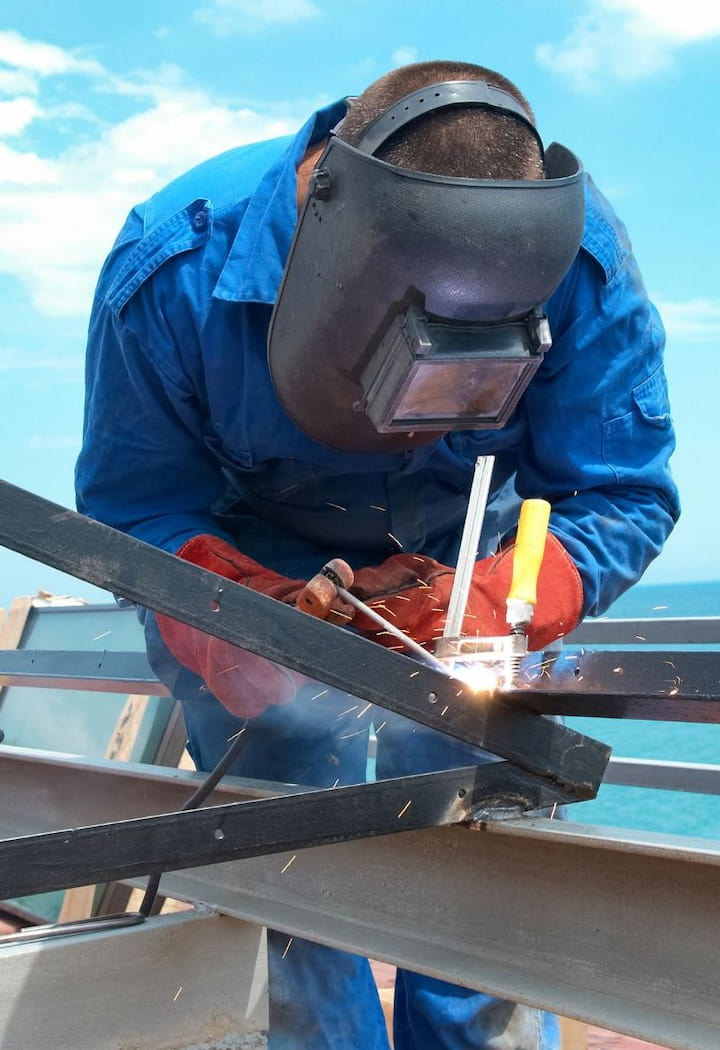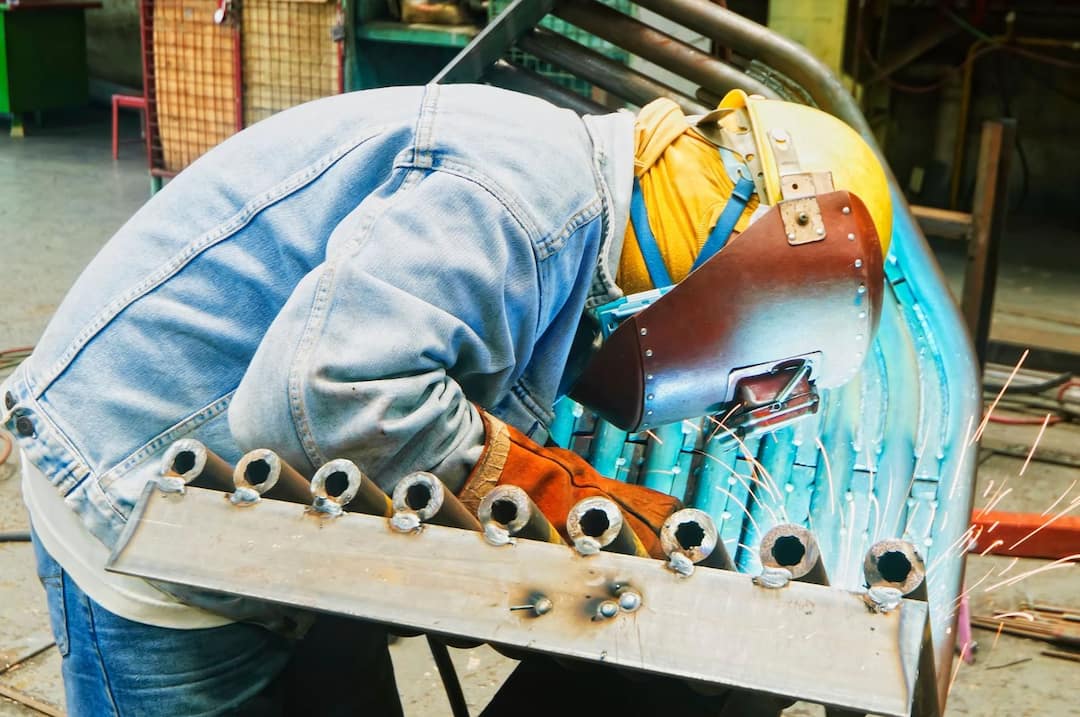Are you thinking of taking up welding as a profession or hobby? Are you curious about what kind of welder you might use to craft projects out of steel, aluminum, and other metals? If so, then a combination welder might be the perfect fit for your needs! But what is a Combo Welder exactly, and how can it help you in your endeavors?
Table of Contents
This post will explore what makes combo welders unique from traditional welders and tips on utilizing one to get the most bang for your buck!
Key Takeaways
- These days with the industrial rise, the need for welders is also rising. But with modern industries, a new welding technique is being used that is called a combo welding.
- A combo welder is just a combination of any two types of welding.
- Versatility is what you get when you use combo welding technique.
- There are many benefits of using this technique including saving time.
Combo Welder
A combo welder combines two types of welding machines: an arc welder and a MIG (metal inert gas) welder. Arc welders use an electric current to create heat, while MIG welders rely on a consumable electrode and inert shield gas to generate heat.
Combining these together into what's known as a combination welder, offers the benefit of having both processes in one single machine. This allows you to switch back and forth between processes, depending on the welding project performed. You can find a great combo unit in my Miller Multimatic 220 review.
Benefits Of A Combo Welder
The most obvious benefit of using a combo welder is its versatility. Having arc and MIG welding in the same machine allows you to switch back and forth between processes depending on the job.
This can save a lot of time when working on large projects requiring different welds. Another benefit is that combination welders tend to be more affordable than other welders. This makes them ideal for welding students who don’t want to invest much money into expensive equipment.
Roles and Types of Combination Welder
Combination welders come in various shapes and sizes, so it is important to consider the roles you need your combo welder to play.
Depending on your needs, you can find combination welders designed for light or heavy-duty welding projects. Consider portability when deciding which type of combo welder to use.
If you are looking for a combination welder that can tackle both MIG and TIG welding, then opt for a multi-process combo welder. This type of machine will give you the flexibility to switch between different processes, while still being able to take on any project thrown your way.
For those looking for a combination welder that is solely dedicated to MIG or flux-core welding, single-process machines are the way to go. Single-process machines offer quick setup time and precise results in just one pass.

What Does a Combination Welder Do?
A combination welder is capable of performing both MIG and arc welding. With a MIG weld, an electric current passes between the metal being worked on and the consumable electrode, which is fed from a wire spool.
The process creates an arc that melts the wire and causes it to fuse with the base metal. This produces a strong and durable weld. Arc welding, on the other hand, creates an electric arc between the base metal and a consumable electrode that emits sparks.
This process can also create strong welds but is less efficient and effective than MIG welding for most applications.
A combination welder can easily switch back and forth between processes, depending on the job, by having both types of welding in one machine. This allows for greater flexibility when working with different metals and projects.

Difference Between Pipe Welders and Combo Welders
Pipe welders and combination welders have similarities but their differences can be significant. Pipe welders are typically used for smaller-scale welding jobs involving joining pipes or tubes. They use arc and gas or stick welding processes to ensure the joint is strong and durable.
If we talk about combination welders, they are usually used for larger-scale welding equipment and they utilize a combination of multiple welding processes, such as MIG, TIG, and stick welding techniques.
This allows them to be used on thicker and more complex pieces than pipe welders could typically handle. Combo welding methods usually have a variety of settings that can be adjusted, depending on the type of material being worked on.
How To Become a Combination Welder?
Combination welding is a complex process that requires specialized training and skill. The best way to become a combination welder is by earning an associate's degree in welding technology from a community college or trade school. Associate's degrees typically take two years to complete, and they provide a comprehensive background in welding theory and practice and safety procedures.
After earning an associate's degree, aspiring combination welders should seek apprenticeships or internships to gain hands-on experience.
Most employers require welders to have several years of experience before becoming certified in their specialty area, such as combination welding. The American Welding Society offers a variety of certification exams on topics related to welding.
Where Do Combination Welders Work?
Combination welders work in industrial settings such as manufacturing plants, construction sites and shipyards. They may also be employed by welding shops or metal fabrication companies.
They are responsible for setting up and operating welding machines, reading blueprints, and determining the best welding techniques for a project.
Combination welders may be required to use various tools for cutting, grinding, and shaping metals. They must also know safety procedures and follow all regulations in the workplace.
FAQs Related to Combo Welder
What Skills Do Successful Combo Welders Have?
Combo welders need to have the ability to operate multiple types of welding equipment and know how to read blueprints. Good hand-eye coordination is also important, as is the ability to work in tight spaces or limited visibility areas.
The combination welder must be able to troubleshoot problems with their welding machine or welding torches. They must also be able to keep up with the ever-changing rules and regulations regarding welding safety. Knowledge of different materials, their characteristics, and how they respond to various welding processes is essential for success as a combo welding.
How can Combo Welders increase their salary?
Combo welders can increase their salary by taking on additional certifications or pursuing advanced training. With the right credentials, combination welders can qualify for higher-paying positions and command better wages.
They may be able to find jobs in new locations that offer higher pay rates. Combination welders should also consider networking with other professionals within the industry and looking for opportunities to showcase their skills.
What are TIG and MIG?
TIG (Tungsten Inert Gas) and MIG (Metal Inert Gas) are welding processes that use a non-consumable tungsten electrode to create the weld. The TIG process uses an inert gas, such as argon or helium, to protect the weld area from oxidation, while the MIG process uses a consumable wire feed to create the weld.
Both processes are often combined in a combination welder allowing the user to switch between TIG and MIG welding with just one machine.
